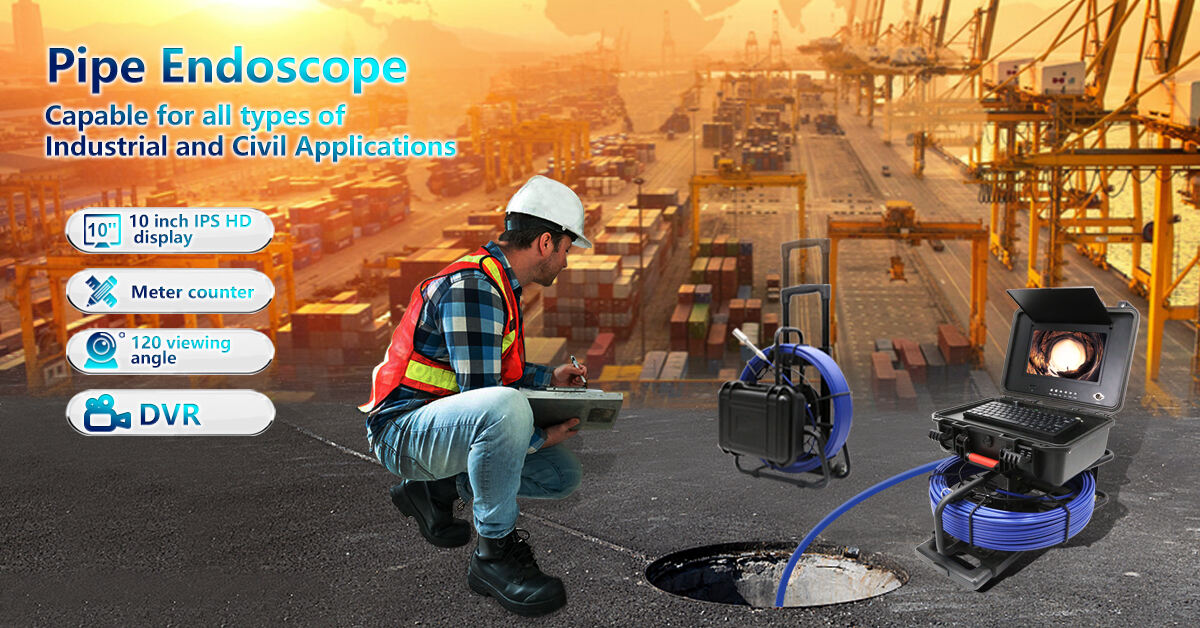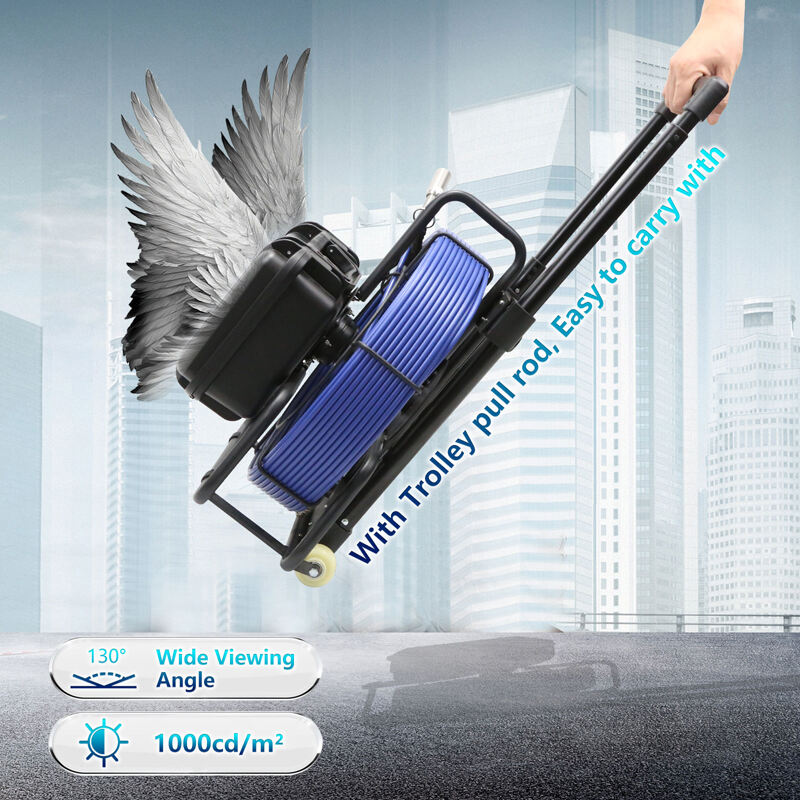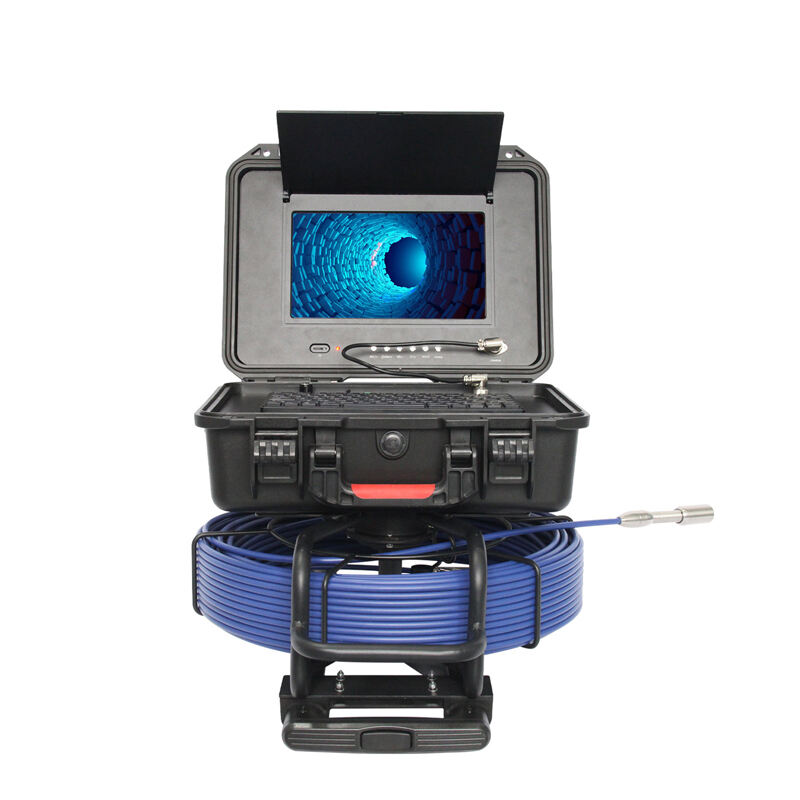Why Speed Matters in Industrial Pipe Scans
The Growing Demand for Rapid Pipeline Diagnostics
Pipeline diagnostics need to happen fast these days because regulations keep getting stricter and industries want real time data more than ever before. Manufacturing plants especially are facing tighter compliance timelines all the time, which means they need inspection results quicker than what traditional methods can provide. Speed matters for businesses not only to stay within legal boundaries but also to cut down on production stoppages and keep things running smoothly. When pipelines get scanned rapidly, problems show up sooner so maintenance crews can fix them before major disruptions occur, keeping operations going and boosting overall output. As oil refineries, chemical plants and other heavy industries adopt smarter technology solutions across their facilities, faster pipeline inspections have become almost standard practice now, making speed a key factor in how well these complex systems perform day after day.

Challenges of Traditional Pipe Inspection Methods
Old school ways of checking pipes usually take forever and cause all sorts of downtime issues. Take manual checks for example they require tons of manpower, eat up budget dollars, and people just make mistakes when doing this kind of work day after day. Another big problem with conventional methods? Getting to some parts of the pipeline system is basically impossible without tearing things apart. This means inspectors miss spots where problems might be hiding. All these shortcomings really slow down operations and hurt productivity across the board. The industrial sector knows this all too well, which explains why there's such a push right now for better inspection tech that cuts down on time spent and gives more accurate results without breaking the bank.
How 10-Second Scans Revolutionize Maintenance
Industrial pipe inspections have changed completely since the introduction of those 10 second scans. What used to take hours now takes mere moments, letting maintenance crews spot problems much faster than before. Technicians can catch leaks, corrosion or blockages early on so they can fix them before something breaks down entirely. The shorter scan times mean workers spend less time in dangerous areas around pipes and machinery, which makes everyone's job safer overall. When a scan finishes, the results show up right away on handheld devices, so teams don't have to wait days for reports anymore. Factories across the country are adopting this fast scanning tech because it saves money while keeping employees out of harm's way during routine checks. Maintenance departments report fewer emergency shutdowns and better planning capabilities when they have immediate access to inspection data.
Key Features of the 10â HD Live Feed Inspection System
Crystal-Clear Imaging for Industrial-Grade Precision

The 10 inch HD Live Feed Inspection System provides really sharp detail thanks to its high resolution imaging capabilities, making diagnostics much clearer than standard systems. When checking for cracks, corrosion or other issues inside pipes and structures across manufacturing plants, this level of detail matters a lot. Technicians get to spot problems early on that could otherwise go unnoticed until they become serious safety hazards or cause production delays. The system's ability to catch those small details during inspections saves companies time and money in the long run, especially in sectors like oil refining or chemical processing where tiny flaws can escalate into major incidents if left unchecked.
Tangle-Free Reel Mechanism: Durability Meets Efficiency
What really sets this inspection system apart is the tangle-free reel mechanism that cuts down on those annoying interruptions during field work. The design boost工作效率 for operators while keeping the whole unit in good shape over time. Built to last in tough pipeline settings where things get pretty rough, this reel actually stands up to constant use better than most alternatives. We've seen installations last years longer than expected because they don't break down as often, saving money on repairs. The heavy duty materials hold up against corrosion and abrasion too, so even when deployed in extreme conditions, the system keeps performing at its best without letting operators down.
Portable Design for Commercial & Municipal Applications
A portable design really boosts how useful this system is at different job sites, which works great for both business inspections and city maintenance checks. The fact that it's so easy to carry around means getting it set up happens fast, no matter where we need to go. Technicians can actually move through tight spaces and tricky areas much better than with older systems, which helps them get those complete inspections done properly. The way this 10 inch HD Live Feed Inspection System adapts to all sorts of situations makes it stand out in today's market. From small repair shops to large manufacturing plants, this tool handles everything from routine checks to complicated diagnostics without breaking a sweat.
Real-World Applications Across Industries
Oil & Gas Pipeline Integrity Management

Keeping pipelines intact remains a top concern for companies operating in the oil and gas field. Safe operations depend on it, plus there are those pesky environmental regulations to follow. Regular checks along the pipeline network help spot problems early before they turn into major headaches. Think about it this way: catching a small leak now prevents bigger issues down the road that might pollute surrounding areas or land the company in trouble with regulators. Advanced tools like industrial grade camera systems make these inspections much more reliable compared to older methods. Companies investing in such technology aren't just protecting their infrastructure investments; they're actually staying ahead of what most regulatory bodies expect from modern pipeline operators today.
Sewer and Wastewater System Inspections
Regular checks on sewer and wastewater systems are really important if we want to stop blockages from happening and catch any structural problems before they cause big issues. Using things like those portable pipe inspection cameras makes sense because it cuts down on how much disruption there is to everyday services while saving money on repairs in the long run. The newer imaging tech lets engineers map out old pipes and figure out their condition pretty accurately something that matters a lot when trying to understand how well a whole wastewater network is working. Beyond keeping everything running smoothly, these kinds of inspections actually help city planners schedule maintenance work better too, so resources aren't wasted fixing things that aren't broken yet.
Preventive Maintenance in Chemical Processing Plants
For chemical processing plants, regular maintenance isn't just good practice but essential when it comes to staying safe and meeting regulations. When plant managers do their routine checks, they catch problems before they become real issues, cutting down on accident risks quite a bit. Many facilities now use better inspection tools like those heavy duty sewer cameras that give clear views inside pipes and equipment. These upgrades help keep operations running without unnecessary downtime and save money over time by avoiding expensive fixes after something goes wrong. Plants that stick to proper maintenance schedules tend to run smoother overall, which means workers stay safer and production stays on track without unexpected interruptions.
Future-Proofing Inspections: AI & Robotics Integration
Synergy with Automated Crawler Robots
When AI meets automated crawler robots, it opens up exciting possibilities for inspections in tough spots where people normally wouldn't go. These machines cover large areas much faster than before, and the AI part makes sense of all the data collected during these checks. The real win here is twofold: better accuracy in what gets reported and safer working conditions since workers stay clear of dangerous areas. Take Aramco's Hybrid UT Inspection Drone as a prime example. This gadget combines drone tech with crawling abilities and sticks magnetically to pipes to run detailed ultrasonic tests. What sets it apart is how thoroughly it can inspect pipelines without needing constant human intervention or dealing with the usual constraints of traditional methods. Companies adopting this kind of tech are seeing smoother operations even when conditions get rough, plus they gain valuable information that wasn't possible before. Those interested in learning more about how this Hybrid UT Inspection Drone works should look into case studies from oil fields where it has already made a difference.
Predictive Analytics for Proactive Repairs
Industrial maintenance is changing thanks to predictive analytics, which uses past data to spot potential problems before they turn into costly breakdowns. Instead of waiting for something to fail, companies can schedule repairs when it makes sense for operations rather than dealing with unexpected downtime. The savings go beyond just money saved on emergency fixes. Machines last longer too because parts aren't pushed beyond their limits. When factories know equipment might fail next month instead of next week, they can prepare replacement parts ahead of time. This kind of planning keeps production lines running smoothly most of the time. For manufacturers looking at long term costs, this proactive approach means fewer surprises and better overall system reliability across different industries.
Sustainability Benefits of Precision Diagnostics
When it comes to sustainability, precision diagnostics really matter because they catch problems early on before they become big headaches, which saves resources down the road. Better inspection methods mean less waste during maintenance work across various industries. Businesses that actually commit to green practices tend to look better in public eyes too, building stronger relationships with customers who care about these things. Take Aramco for instance, they've invested heavily in cutting edge inspection tech that lets them run their operations while still being responsible stewards of the environment. For most companies, adopting these diagnostic tools isn't just good for the planet, it makes sense financially as well since fixing small issues prevents costly breakdowns later.
Table of Contents
-
Why Speed Matters in Industrial Pipe Scans
- The Growing Demand for Rapid Pipeline Diagnostics
- Challenges of Traditional Pipe Inspection Methods
- How 10-Second Scans Revolutionize Maintenance
- Key Features of the 10†HD Live Feed Inspection System
- Crystal-Clear Imaging for Industrial-Grade Precision
- Tangle-Free Reel Mechanism: Durability Meets Efficiency
- Portable Design for Commercial & Municipal Applications
- Real-World Applications Across Industries
- Oil & Gas Pipeline Integrity Management
- Sewer and Wastewater System Inspections
- Preventive Maintenance in Chemical Processing Plants
- Future-Proofing Inspections: AI & Robotics Integration
- Synergy with Automated Crawler Robots
- Predictive Analytics for Proactive Repairs
- Sustainability Benefits of Precision Diagnostics


